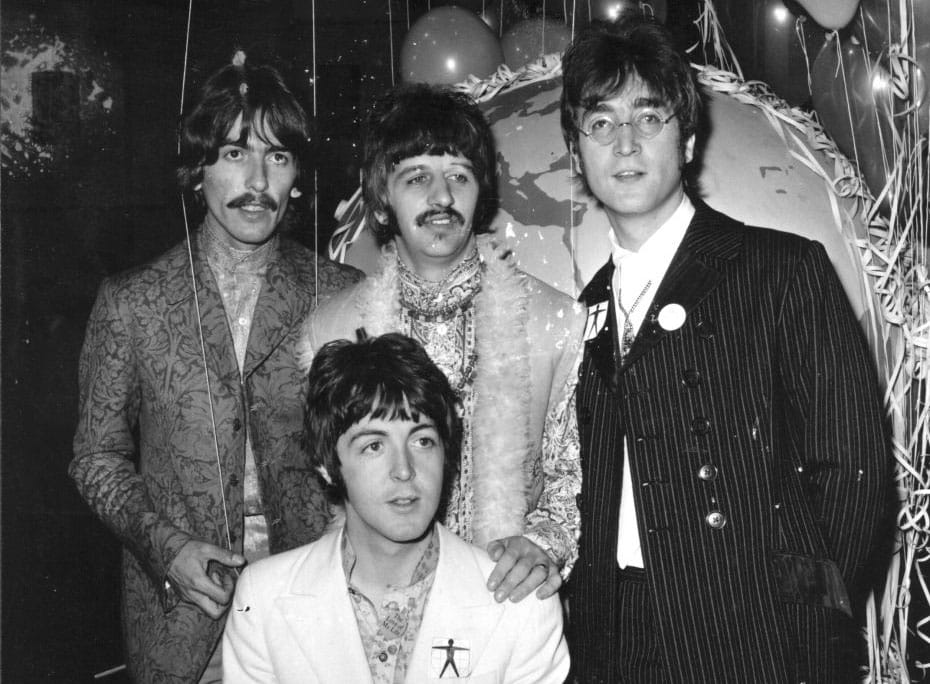 Photo by Evening Standard/Getty Images
Photo by Evening Standard/Getty Images As a longtime Beatles fan (fanatic might be more accurate), I’ve been waiting eagerly for the release of their official final song, “Now and Then,” which came out last Thursday.
And I’ve been trying vainly to love it.
This historic final track is a studio remake of a song written by John Lennon in the late 1970s, which he recorded in his New York apartment on a handheld cassette, just him and his piano.
Maybe my problem with this official version is that I had already fallen in love with the old, messy version. Despite the rough sound, I couldn’t get the singing, the melody or the lyrics out of my head.
It’s true that the new track is brilliantly produced. Thanks to new technology, Lennon’s voice is sharp and clear. The instrumentals and harmonies are rich. It’s a classic studio recording.
The old version, however, is haunting. Through the rawness of the track, you could feel Lennon’s pain. You could feel his struggle.
At the time, Lennon was going through a difficult separation from his longtime soulmate, Yoko Ono. It was a few years after the Beatles’ breakup, and Lennon had gone on an extended drug-fueled party binge on the West coast.
Now he wanted his woman back, and “Now and Then” was born.
The old and new version both start with these lyrics:
“I know it’s true
It’s all because of you
And if I make it through
It’s all because of you.
“And now and then
If we must start again
Well, we will know for sure
That I will love you.”
And then, the new version omits this wailing bridge:
“I don’t wanna lose you, oh no, no
Abuse you or confuse you
Oh no, no, sweet darlin’
But if you have to go (Go), away (Ah-ah-ah)
If you have to go, well you the reason…”
The thing is, that was my favorite part of the song. It injected fear of loss. If the rest of the song touched on yearning, loving and missing, the “I don’t want to lose you” bridge touched on the frightening possibility of Lennon losing the love of his life.
That bridge shook up the song. It was a high-wire act, with Lennon’s voice reaching a fragile falsetto. It was a lover taking a chance on sharing his deepest anxiety.
As Ben Lindbergh, bemoaning the loss of the bridge, writes on The Ringer, the song is “less poignant without some of the singer’s self-doubt.”
Why does the new version omit this crucial section, which is the key lyrical difference between the two versions? It’s not clear.
Lindbergh thinks it may be because the “lyrics trail off into placeholder scatting,” meaning it would have required more lyrics and vocals. “It was one thing for McCartney and Harrison to replace Lennon’s incomplete pre-chorus vocals on ‘Free As a Bird’ in 1995,” he writes, “[but] it would have been another for McCartney to do the same on ‘Now and Then’ in 2023, with his husky, warbly, 81-year-old voice.”
Vocal challenges aside, the omission also limits the song’s creative structure. Without Lennon’s cry-of-the-soul digression, as Lindbergh notes, “the song’s structure is simpler and more repetitive: verse, chorus, verse, chorus, solo, verse.”
Don’t get me wrong. I still like the new version (you can hear it below). It has many of the gorgeous elements that have made Beatles music timeless and transcendent.
But it also reminds me how important John Lennon was to the success of the band. Lennon wrote the “I don’t want to lose you” bridge in “Now and Then” for a reason. It came from the deepest, most vulnerable part of his soul. He was afraid to lose his love, but he wasn’t afraid to share that fear with us.
Rough demo or not, that’s a part of Lennon I never want to lose.























 More news and opinions than at a Shabbat dinner, right in your inbox.
More news and opinions than at a Shabbat dinner, right in your inbox.